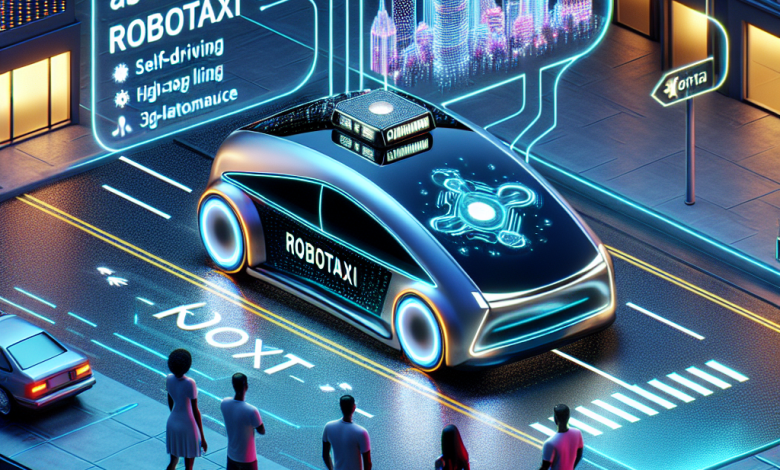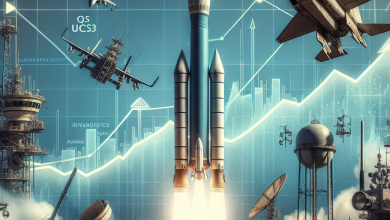
Everything You Need to Know About Robotaxis
Robotaxis, autonomous vehicles designed for public transportation, represent a significant evolution in transportation concepts. Companies like Tesla, Waymo, and Uber are striving to establish efficient, cost-effective, and scalable fleets of self-driving vehicles.
Analysts from Bernstein recently examined critical aspects of robotaxis, emphasizing their economics, technology, and the regulatory challenges they encounter.
The Economics of Robotaxis
The economic feasibility of robotaxis is a crucial consideration for both investors and companies. Bernstein analysts indicate that, while autonomous vehicles (AVs) are already competitive in terms of active miles, deadhead miles—those driven without passengers—remain problematic.
They noted, "Robotaxi cost per mile is below that of the current driver model. However, if we include deadhead miles… the unit economics may still be modestly negative today." Despite these concerns, the report anticipates a decline in AV costs over time, while traditional driver-based costs may rise due to labor and insurance inflation.
Bernstein stated, "Cost curves will diverge. AV costs will come down over time while driver model costs will likely increase." This trend could lead to increased profitability for robotaxi operators, although analysts warn that “gross profit is not EBIT” because of the high operational expenses involved.
Tesla’s entry into this market holds potential for disruption, given its lower capital expenditure threshold for scaling due to its vision-only approach to autonomy. If Tesla can effectively address autonomy with its camera-and-software-first strategy, it could position itself as a low-cost leader. However, the company is still playing catch-up to rivals like Waymo and Cruise, which have already started commercial robotaxi operations.
Waymo, a part of Alphabet Inc., has been proactively engaging with regulators for over a decade, establishing itself as a leader in the sector, while Tesla has yet to participate in regulatory processes to the same extent.
The Technology Behind Robotaxis
The technology that underpins robotaxis differentiates these companies significantly. Tesla has adopted a "vision-only system," depending solely on cameras and software for its Full Self-Driving platform. In contrast, competitors like Waymo and Cruise utilize a combination of cameras, lidar, and radar, enhancing safety and reliability.
Bernstein highlighted Tesla’s unique approach to autonomy, noting that while it chooses a vision-only system, its leading competitors employ a more complex mix of sensors. The report acknowledged ongoing discussions regarding the effectiveness of Tesla’s methodology, especially in challenging driving conditions.
While lidar systems are more expensive, they provide intricate 3D mapping and function effectively in different lighting conditions. By relying solely on a camera-based solution, Tesla has lowered costs but faces more difficulties in adverse weather or lighting situations. Despite these challenges, Tesla leverages its extensive real-world data to refine its AI models. Nevertheless, Bernstein cautioned that Tesla’s current level of autonomy is between Level 2 and Level 3, whereas firms like Waymo are operating at Level 4, enabling their vehicles to function independently of a driver in specific scenarios.
Tesla’s minimalist approach contrasts with Waymo’s extensive sensor setup, which includes 29 cameras, five lidars, and radar, making it one of the most sensor-rich robotaxi systems in the industry. The ongoing debate centers on whether Tesla’s cost-effective strategy can compete with these more sophisticated systems.
The Regulatory Landscape
Technological progress is crucial, but regulatory hurdles are equally essential for the expansion of robotaxi fleets. Waymo has been collaborating with regulators since 2012, gaining valuable experience through a methodical approach in California and other regions.
Bernstein noted that Waymo initiated self-driving trials in 2012 and expanded to trials without human oversight in 2017, demonstrating its careful navigation of the regulatory landscape necessary for commercial operations.
Conversely, Tesla has been less proactive in engaging with regulators, which could impede its ability to scale robotaxi operations. Analysts pointed out that Tesla has "not applied to test without drivers or started the process for commercial robotaxi licenses," potentially creating a significant bottleneck for its ambitions in the autonomous vehicle sector, despite its technological advancements.
The regulatory environment also carries inherent risks. Recent incidents, such as the suspension of Cruise’s license in California following a notable event, underscore the scrutiny regulators apply to robotaxi operations. Tesla’s limited regulatory involvement may hinder its ability to keep pace with competitors like Waymo and Cruise, who have established robust relationships with regulatory agencies.
 GOOGL
GOOGL  META
META 


